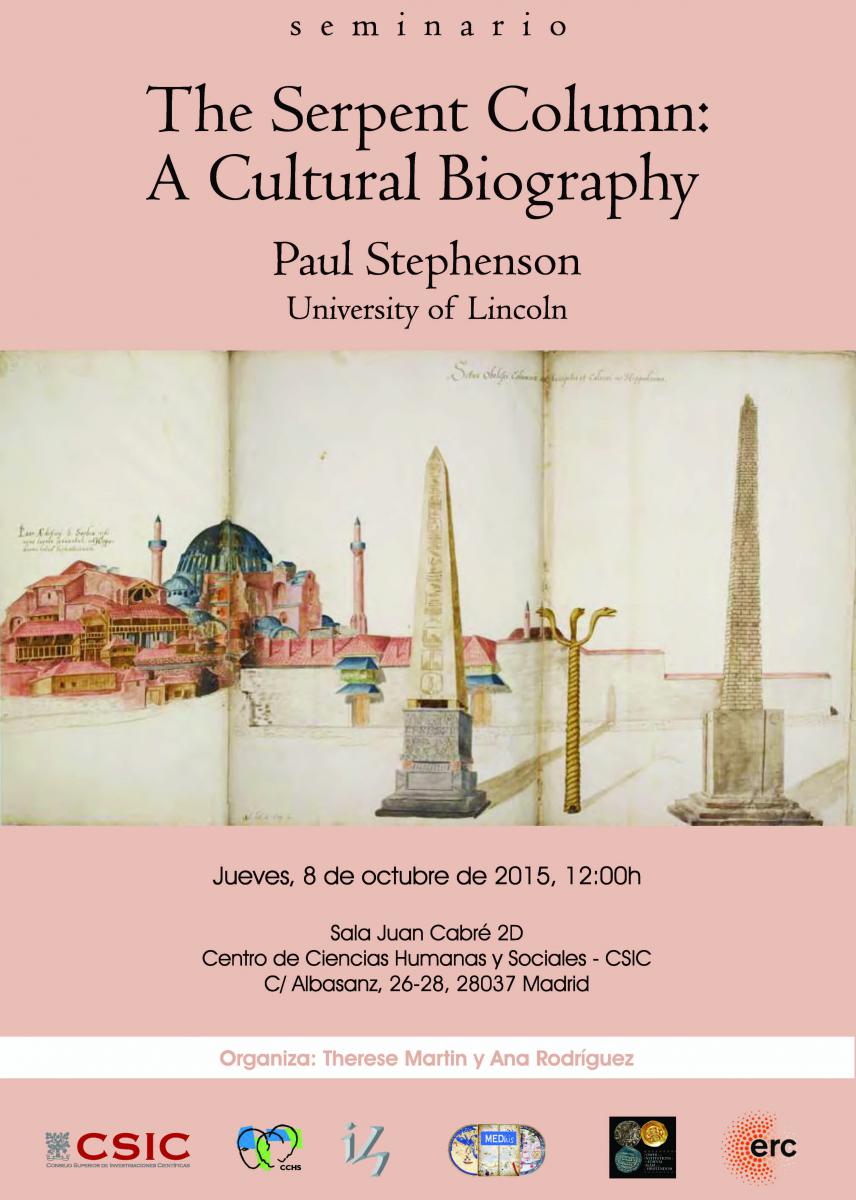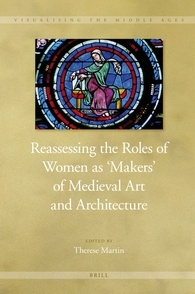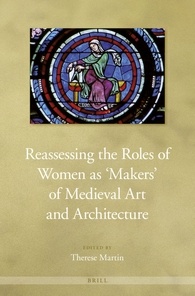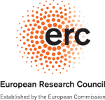News:
José Haro Peralta successfully defended his dissertation on 11 September 2017 at the Universidad de Salamanca, “‘De mal en peor’: Análisis socio-económico del Bagdad del siglo XI a través de las fuentes narrativas, con especial referencia al Muntaẓam de Ibn al-Yawzī” (co-director, Rachid El-Hour).
Therese Martin was awarded the Best Article Prize 2015-2016 by the Society for Medieval Feminist Scholarship for “The Margin to Act: A Framework of Investigation for Women’s (and Men’s) Medieval Art-Making,” in ‘Me fecit.’ Making Medieval Art (History), special issue, Journal of Medieval History 42, no. 1 (2016), pp. 1-25.
A book edited by Therese Martin has been published and is available in both hard cover and open access: John Williams, Visions of the End in Medieval Spain: Catalogue of Illustrated Beatus Commentaries on the Apocalypse and Study of the Geneva Beatus, ed. T. Martin, Amsterdam: Amsterdam University Press, 2017.
http://www.oapen.org/search?keyword=9789462980624
http://press.uchicago.edu/ucp/books/book/distributed/V/bo23452754.html
The final collective publication of our project appeared in February 2016: ‘Me fecit’. Making Medieval Art (History), ed. Therese Martin, special issue, Journal of Medieval History, vol. 42, no. 1 (2016).
- Therese Martin, “The Margin to Act: A Framework of Investigation for Women’s (and Men’s) Medieval Art-Making,” pp. 1-25.
- Alexandra Gajewski and Stefanie Seeberg, “Having Her Hand in It? Elite Women as ‘Makers’ of Textile Art in the Middle Ages,” pp. 26-50.
- Jenifer Ní Ghrádaigh, “The Occluded Role of Royal Women and Lost Works of Pre-Norman English and Irish Art (tenth to twelfth centuries),” pp. 51-75.
- Shannon Wearing, “Holy Donors, Mighty Queens: Imaging Women in the Spanish Cathedral Cartularies of the Long Twelfth Century,” pp. 76-106.
- Glaire Anderson, “A Mother’s Gift? Astrology and the Pyxis of al-Mughira,” pp. 107-130.
- Julie A. Harris, “Making Room at the Table: Women, Passover, and the Sister Haggadah (BL MS Or. 2884)” pp. 131-153.
Stefanie Seeberg received the Offermann-Hergartenpreis 2015 (Preis der Philosophischen Fakultät der Universität zu Köln) for excellent published research project of scholarly qualification (Habilitationsschrift) for her book Textile Bildwerke im Kirchenraum, Leinenstickereien im Kontext mittelalterlicher Raumausstattung aus dem Prämonstratenserinnenkloster Altenberg/Lahn, Petersberg 2014.
Therese Martin was awarded the Charles Julian Bishko Memorial Prize, best article 2015, by the Association for Spanish and Portuguese Historical Studies for “Crouching Crossbowmen in Early Twelfth-Century Sculpture: A Nasty, Brutish, and Short(-Lived) Iconography,” Gesta 54, no. 2 (2015), pp. 143-164. Available open-access:
http://www.journals.uchicago.edu/doi/full/10.1086/681952
News:
Amanda Dotseth successfully defended her dissertation, “San Quirce de Burgos: Reframing Rural Romanesque Architecture in Castile” (co-directors John Lowden, Courtauld and Therese Martin, Consejo Superior de Investigaciones Científicas) at the Courtauld Institute, University of London, on 25 November 2015.
Future activities:
3 March 2016 (originally scheduled 8 October 2015)
12.00, room 2D Juan Cabré (CCHS, c/Albasanz 26-28, Madrid)
seminar: Paul Stephenson, University of Lincoln
The Serpent Column: A Cultural Biography

The Serpent Column, a bronze sculpture that has stood in Delphi and Constantinople, today Istanbul, is a Greek representation of the Near Eastern primordial combat myth: it is Typhon, a dragon defeated by Zeus, and also Python slain by Apollo. The column was created after the Battle of Plataia (479 BC), where the sky was dominated by serpentine constellations and by the spiralling tails of the Milky Way. It was erected as a votive for Apollo and as a monument to the victory of the united Greek poleis over the Persians. It is as a victory monument that the column was transplanted to Constantinople and erected in the hippodrome. The column remained a monument to cosmic victory through centuries, but also took on other meanings. Through the Byzantine centuries these interpretation were fundamentally Christian, drawing upon serpentine imagery in Scripture, patristic and homiletic writings. When Byzantines saw the monument they reflected upon this multivalent serpentine symbolism, but also the fact that it was a bronze column. For these observers, it evoked the Temple’s brazen pillars, Moses’ brazen serpent, the serpentine tempter of Genesis (Satan), and the beast of Revelation. The column was inserted into Christian sacred history, symbolizing creation and the end times. The most enduring interpretation of the column, which is unrelated to religion, and therefore survived the Ottoman capture of the city, is as a talisman against snakes and snake-bites. It is this tale that was told by travellers to Constantinople throughout the Middle Ages, and it is this story that is told to tourists today who visit Istanbul.
News:
http://www.brill.com/products/book/reassessing-roles-women-makers-mediev...
Reassessing the Roles of Women as 'Makers' of Medieval Art and Architecture, now available in paperback!
From the Association for Spanish and Portuguese Historical Studies (http://asphs.net/prizesandsubventions/bishkomemorialprize.html):
This year's Charles Julian Bishko Memorial Prize for the best article published in 2013 or 2014 in the field of medieval Iberian history by a North American scholar goes to Glaire D. Anderson, "Sign of the Cross: Contexts for the Ivory Cross of San Millán de la Cogolla," Journal of Medieval Iberian Studies 6:1 (Jan. 2014), 15-41.
In this article, Glaire Anderson offers a striking and compelling new explanation for the clear Cordoban aesthetic of the ivory cross of San Milla'n de la Cogolla. She argues that the reason the cross was done in this style was that Tota, queen of Pamplona, was deliberately using her kinship and political ties to caliph 'Abd al-Rah.man to consolidate her own power and that of her children and grandchildren, who later occupied thrones in Pamplona and Leo'n. In marshalling Arabic and Latin sources to advance this argument, Anderson seemingly leaves no stone unturned, no possible alternative reading unaddressed. Two committee members commented that every time they found themselves thinking, "Yes, but," Anderson addressed that "but" in the next paragraph or two. The selection committee praised her clear and focused argument, which is well positioned in relationship to the existing literature on this cross, and the freshness and promise of her approach to the origin of this ivory cross.
Anne Marie Wolf, Bishko Prize Committee Chair
Jonathan Ray
Adam Kosto
- Julie Harris and Glaire Anderson had two of the top 25 most read history articles among all the journals published by Taylor & Francis in 2014: http://explore.tandfonline.com/page/ah/most-read-2015/history-25-most-re...
- Glaire D. Anderson won the 2015 Eleanor Tufts Book Award for The Islamic Villa in Early Medieval Iberia: Architecture and Court Culture in Umayyad Córdoba (Ashgate, 2013). According to the selection committee, "Anderson’s book, which examines the aristocratic villas and court culture of Córdoba during the Umayyad dynasty, is unique in several respects. A deeply synthetic study, it draws on a wide range of material including - but not limited to - medieval Arabic texts, ivory carving, agricultural treatises, and archaeological findings to shed light on this important facet of Umayyad architectural patronage. As well as reconstructing the Islamic villa as an architectural entity, Anderson’s book presents it fully within a rich social and political context; considerations of decor, ceremony, and agricultural productivity are key to the study. Of particular importance is Anderson’s nuanced analysis of the villa’s patronage, which fell to members of the 'unfree elite.' A major theme of the book is its recognition that the munyas of Umayyad Córdoba belong to the long tradition of Mediterranean villas which began in the Roman era and continued in Christian European and New World locales. This publication met and surpassed the stipulated award criteria of “originality of conception, thoroughness of research, rigor of argument, brilliance of insight, significance of findings, and clarity of expression.” Although the book will engage and satisfy specialists in Islamic art and architecture, Anderson’s clear prose makes it accessible and valuable to anyone with an interest in a host of related fields."
- Glaire D. Anderson was awarded the Society of Architectural Historians (http://www.sah.org/), Edilia and François-Auguste de Montêquin Senior Fellowship 2014, to support her research on "Architecture, Kinship and Royal Identity across Religious Borders: Córdoba, Pamplona and León (c. 930 - 976).”
- Former predoctoral fellow Flora Ward successfully defended her dissertation in the Department of Art at the University of Toronto.
Publications:
- Textile Bildwerke im Kirchenraum by Stefanie Seeberg (Michael Imhof Verlag, 2014) addresses the rich and multi-faceted question of church furnishings in the Middle Ages. In contrast to previous studies, here textiles are the starting point as a temporary (removable) medium of images located within the female monastery of Altenberg/Lahn near Marburg. The still existing church and conventual buildings were constructed under magistra Gertrud (d. 1297), daughter of Saint Elisabeth of Thuringia. Her influence is clearly visible in both the architecture and the church decoration. Six large embroideries with high quality drawings, elaborate images, and detailed inscriptions survive from this monastery. These embroideries—a wall hanging with scenes from the life of St. Elisabeth, a catafalque cover for a temporary tomb with figures of standing sovereigns, and altarcloths for the high altar—were once a key part of three ensembles from subsequent periods of decoration, including altarpieces, wall- and glass paintings, sculptures, relics, and metalwork. A study of the church furnishing as a whole—and in a context with well-preserved written sources complete within the original architectural setting—leads to new conclusions concerning making and patronage as well as the functions and materiality of church decoration. As such, written and visual sources provide a clear view of women’s influence on the art and architecture of a female monastery. The results are striking: this material provides evidence of influence and exchange across the boundaries of enclosure as well as the sophisticated use of visual medias and images for devotional, pastoral, and political purposes both within and outside the monastic enclosure.
http://www.imhof-verlag.de/textile-bildwerke-im-kirchenraum.html

- Journal of Medieval Iberian Studies - Special Issue: Women's Creativity and the Three Faiths of Iberia / Reassessing the Roles of Women as 'Makers' of Medieval Art and Architecture, Volume 6, Issue 1, 2014, edited by Julie A. Harris is now available.
- Reassessing the Roles of Women as 'Makers' of Medieval Art and Architecture, edited by Therese Martin and published by Brill.

These volumes propose a renewed way of framing the debate around the history of medieval art and architecture to highlight the multiple roles played by women. Today’s standard division of artist from patron is not seen in medieval inscriptions—on paintings, metalwork, embroideries, or buildings—where the most common verb is 'made' (fecit). At times this denotes the individual whose hands produced the work, but it can equally refer to the person whose donation made the undertaking possible. Here twenty-four scholars examine secular and religious art from across medieval Europe to demonstrate that a range of studies is of interest not just for a particular time and place but because, from this range, overall conclusions can be drawn for the question of medieval art history as a whole.
Contributors are Mickey Abel, Glaire D. Anderson, Jane L. Carroll, Nicola Coldstream, María Elena Díez Jorge, Jaroslav Folda, Alexandra Gajewski, Loveday Lewes Gee, Melissa R. Katz, Katrin Kogman-Appel, Pierre Alain Mariaux, Therese Martin, Eileen McKiernan González, Rachel Moss, Jenifer Ní Ghrádaigh, Felipe Pereda, Annie Renoux, Ana Maria S. A. Rodrigues, Jane Tibbetts Schulenburg, Stefanie Seeberg, Miriam Shadis, Ellen Shortell, Loretta Vandi, and Nancy L. Wicker."
http://www.brill.nl/reassessing-roles-women-makers-medieval-art-and-architecture-2-vol-set
Reviews:
- “...Incorporating a dazzling array of subjects and approaches, and ranging across Jewish, Christian, Viking, and Islamic Europe, as well as the Kingdom of Jerusalem, the twenty-four essays gathered here demonstrate the richness of medieval women’s artistic activities, establishing beyond any doubt the centrality of women to the history of art… The richness of these two volumes can hardly be addressed in a short review. The breadth of subjects, analytical rigor, and methodological reach are witness to the richness of scholarship on medieval women and art, and a testament to the editorial guidance of Therese Martin, whose introduction establishes clear questions and interpretative themes as parameters for the volume as a whole… Reassessing the Roles of Women as ‘Makers’ of Medieval Art and Architecture is an ambitious collection that will be welcomed by scholars of art, history, religion, and women’s studies, as well as by interested general readers, who will find in its two volumes much to ponder, delight, and surprise."
Fiona Griffiths, Studies in Iconography, vol. 35 (2014).
- "Therese Martin rightly notes in her introductory essay that the history of medieval art to date is largely a history of men. Art and architecture has been seen as being made by and for men, with masculine status routinely assigned to all unascribed works. This vast and highly scholarly collection of essays and illustrations seeks to restore women’s important presence to the history of art...The erudition of the collection is admirable, and several of the essays are certainly worthy of being expanded into monographs. They offer an energetic engagement with gender issues alongside the deepest analysis of a large number of works and their “makers.” A vast bibliography, useful indices and nearly 300 fine color and black-and-white illustrations add to its value, which is unlikely to surpass in a generation. “Anonymous” will indeed no longer be presumed to be male."
Lesley Pattinson, Sixteenth Century Journal, 44/4 (2013): 1089-1091
- "That this collection and its individual contributions have stimulated a review of this length [15 pages] is a testament to their value, interest, and quality. But it is not enough either to praise the authors for their service to the discipline in contributing such fine, thoughtful essays, nor to laud Martin for conceiving this project and shepherding it through to publication. Through their sustained emphasis on and attention to women’s artistic agency, Martin and her contributors have challenged us to conceive medieval art and architecture through a fundamentally different lens, one that naturalizes women’s contributions to and participation in their ‘making’. In this,Reassessing the Roles of Women as ‘Makers’ of Medieval Art and Architecture is a milestone not only in the study of medieval women in art history, but also in medieval art history tout court. Now that Martin and her authors have thrown down the gauntlet, are medievalists ready to take it up?"
Kathryn A. Smith, Journal of Art Historiography, number 9 (December 2013): 1-15; http://arthistoriography.
- “Reassessing the Roles of Women as “Makers” of Medieval Art and Architecture, edited by Therese Martin, makes a substantial contribution to the literature on women’s involvement in medieval artistic production…The essays collectively challenge a range of assumptions about medieval women’s roles in processes of artistic production… In focusing on women as the “makers” of medieval art, the essays treat women as both artists and patrons and consider the relationship between those two roles.”
Marian Bleeke, Medieval Feminist Forum, 49.1 (Summer 2013)"
- The contributions "...collectively mark a valuable addition to scholarship on women as artists and patrons of medieval art, above all, in their emphasis on neglected topics such as women as patrons of architectural projects and women as artists at the periphery of western Europe, i.e. in the Iberian peninsula, Ireland, Scandinavia, and the Holy Land. ... The colour plates and black and-white figures provide a treasure trove of unfamiliar material, of which surely one of the most extraordinary is the jagged, irregular fourteenth-century reliquary of the Holy Cross, perhaps a pastiche made of silver and coral and bearing the arms of Aragon and Portugal, which is connected to the patronage of Isabel, daughter of Pere III of Aragon and Constanza Hohenstaufen. This and many other remarkable objects discussed here deserve to enter the mainstream of art history..."
Jeffrey F. Hamburger, Medium Aevum vol. 82, issue 1, p. 179 (Spring-Summer 2013).
- "...It is a useful handbook for those who have never dealt with the subject because it gives an overview of the role of women in art production in the middle ages. And for the experienced researcher it gives a collection of female roles he needs to be aware of when approaching any new object because information on gender of the artist/patron or the related prejudice can have significant impact on the interpretation of any work of art..."
Silvija Juraic, Hortus Artium Medievalium, Vol. 19, May 2013
- Ana Rodríguez, Arenal, 19:1 (2012): pp. 255-257.




